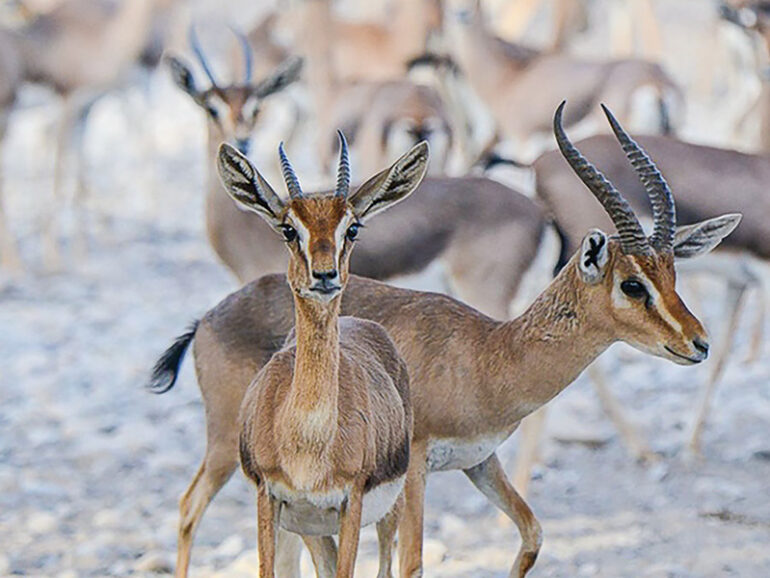 By OUR CORRESPONDENT
By OUR CORRESPONDENT
A research team in Oman has successfully documented the genetic structure and diversity of the Arabian gazelle (Gazella arabica) in breeding centres across the country, marking a key advancement in wildlife conservation.
The study, published in the journal Zoology in the Middle East, is the first of its kind in the sultanate and -provides a scientific foundation for the management and protection of the species, which is under threat in parts of its natural range.
Conducted jointly by the Environment Authority, the Oman Animal and Plant Genetic Resources Centre (Mawarid), under the Ministry of Higher Education, Research and Innovation, and Sultan Qaboos University, the research analysed 65 gazelle samples from three main sites: Al Saleel Natural Park in South Sharqiyah, the Barka Biodiversity Centre, and the Arabian Oryx Reserve in Al Wusta.
Using advanced genetic analysis techniques, including mitochondrial DNA sequencing and microsatellite DNA markers, the team confirmed that all samples belonged to the Arabian gazelle species. The findings revealed high genetic diversity within the three populations and strong gene flow between them, indicating healthy adaptability and resilience to environmental pressures.
The researchers found low to moderate genetic differentiation between the populations, suggesting they can be used together to support reintroduction programmes without the risk of inbreeding or genetic loss. This insight is expected to guide future breeding and reintroduction efforts aimed at strengthening wild populations.
Zaher Salem al Alawi of the Environment Authority said the study provides a “solid scientific foundation” for future conservation and management plans. “These results give decision-makers accurate tools to support conservation programmes, track the genetic origins of herds, and combat illegal hunting,” he said.
Dr Alia al Ansari of Sultan Qaboos University highlighted the importance of institutional collaboration in achieving these results. She noted that the Environment Authority, as the national body for wildlife protection, can now enhance conservation and reintroduction programmes.
Asila Sulaiman al Naabi, Head of the Research and Genetic Resources Conservation Department at Mawarid, said the documentation of wild animal species through genetic sequencing helps preserve local genetic resources and secure their intellectual property rights. “Preserving samples of genetic origins in gene banks ensures future sustainability,” she said.
© 2021 Apex Press and Publishing. All Rights Reserved. Powered by Mesdac